Invertebrates
Invertebrates are animals that do not have a backbone. They make up the vast majority of animal species on Earth and are found in a wide range of environments, from the depths of the ocean to the forest floor. Invertebrates can be found in various shapes and sizes, with a wide range of adaptations that help them thrive in different habitats.
Types of Invertebrates
There are several major groups of invertebrates, including:
- Arthropods: This group includes insects, spiders, crustaceans, and other animals with exoskeletons and jointed legs.
- Mollusks: Mollusks include animals like snails, clams, and octopuses, with soft bodies and, in many cases, a hard shell.
- Worms: This group includes various types of worms, such as earthworms and leeches, which have long, slender bodies.
- Cnidarians: Cnidarians are animals like jellyfish and sea anemones, which have stinging cells and radial symmetry.
- Echinoderms: This group includes animals like sea stars and sea urchins, which have spiny skin and a unique water vascular system.
Characteristics of Invertebrates
Invertebrates have a range of characteristics that distinguish them from vertebrates:
- They lack a backbone or vertebral column.
- Many invertebrates have exoskeletons, which provide support and protection.
- They often have a different body plan and symmetry compared to vertebrates.
- Invertebrates have a wide range of feeding strategies, including filter feeding, predation, and parasitism.
- They can be found in nearly every habitat on Earth, from the deepest oceans to the highest mountains.
Importance of Invertebrates
Invertebrates play a crucial role in ecosystems and provide many benefits to humans:
- They are essential for nutrient cycling and decomposition, breaking down organic matter and returning nutrients to the soil.
- Many invertebrates, such as bees and butterflies, are important pollinators for flowering plants.
- Invertebrates form the base of many food chains, providing food for a wide range of other animals.
- Some invertebrates are used in medical research and have contributed to important scientific discoveries.
Study Guide
Here are some key points to remember when studying invertebrates:
- What are the major groups of invertebrates, and what are some examples of animals in each group?
- What are the main characteristics that distinguish invertebrates from vertebrates?
- Why are invertebrates important for ecosystems and for human society?
- How do invertebrates adapt to different environments and ecological niches?
- What are some specific examples of invertebrates that have unique adaptations or behaviors?
Understanding the diversity and importance of invertebrates is essential for grasping the complexity of the natural world and the interconnectedness of life on Earth.
.◂Science Worksheets and Study Guides Fourth Grade. Plant Structure and function

 Worksheet/Answer key
Worksheet/Answer key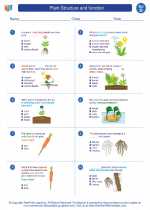
 Worksheet/Answer key
Worksheet/Answer key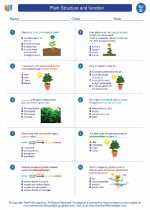
 Worksheet/Answer key
Worksheet/Answer key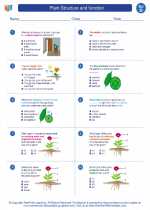
 Vocabulary/Answer key
Vocabulary/Answer key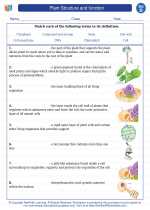
 Vocabulary/Answer key
Vocabulary/Answer key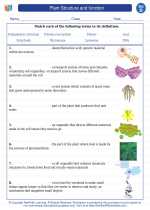
 Vocabulary/Answer key
Vocabulary/Answer key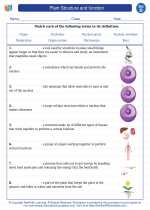
 Vocabulary/Answer key
Vocabulary/Answer key
